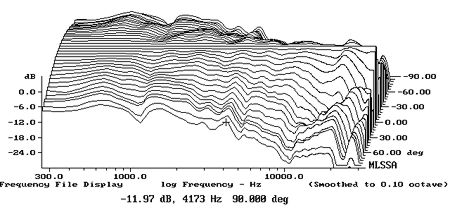tuga
Major Contributor
As for listening distance, none of the papers mention it. The only hint is that the Test 1 paper indicates the room used is this one. Still no mention of listening distance, but that last paper does mention the room dimensions and there are a few photographs of the setup, so I can take a guess that the listening distance is between 5 and 10 meters. I think it's not actually a constant because of the loudspeaker shuffler system, which might be why they don't specify the distance in the papers.
If all Harman tests are performed at a distance between 5 and 10 meters then the dispersion characteristics do have a major impact because one will be listening to the room instead of the speakers and wide dispersion may in fact become important, particularly when you have several listeners evaluating at the same time (which requires a wide sweet-spot).
On the other hand I am willing to bet that no more than 20% of European audiophiles listens at a distance of 5 let alone 10 meters...

